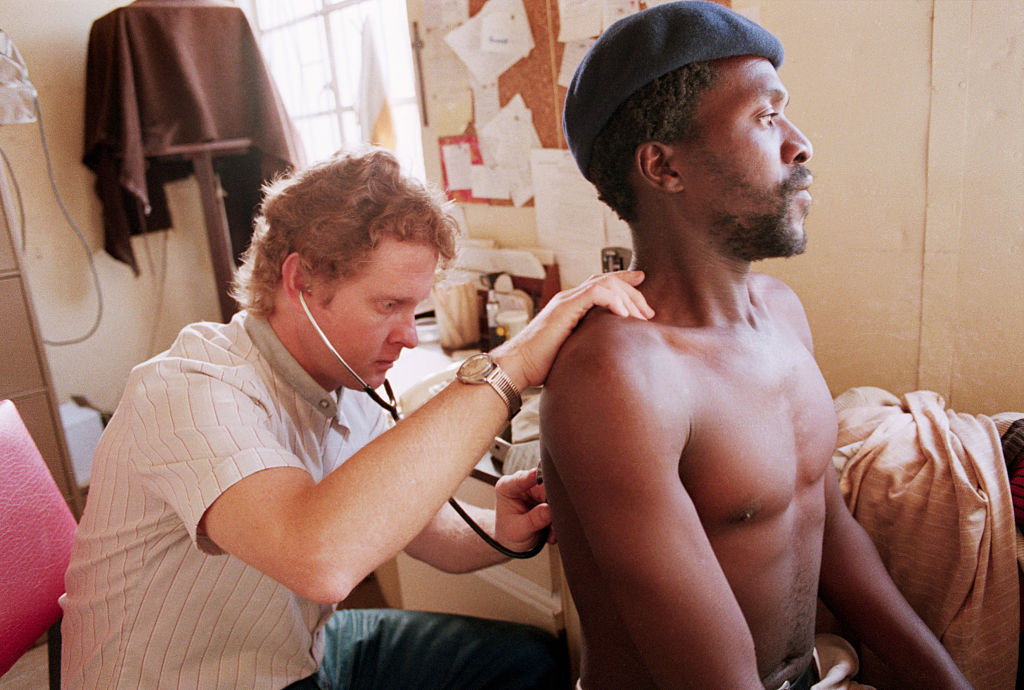Despite having more privilege, wealth, and career success than women, men in the U.S. generally lead shorter, unhealthier lives than their female counterparts. But a report just released by the American Psychological Association finds that for men of color and sexual minority men this reality is compounded, partly due to systemic oppression and discrimination.
For example, African-American men consistently have life expectancies six years shorter than white men, according to the report.
“Eliminating early deaths and negative health outcomes among boys and men of color and gay, bisexual, and transgender boys and men are essential for the well-being of our country,” says Wizdom Powell, director of the Health Disparities Institute and associate professor of psychiatry at UConn Health, and chair of the APA Working Group on Health Disparities in Boys and Men, which wrote the report.
“The social justice movements occurring all over America show us there is a deepening national interest in disenfranchised groups,” Powell adds. “They face unique social stressors that can compromise their health and safety, and we wanted to understand how marginalized identities, stress, and disadvantage affect health behaviors, coping strategies, and outcomes of these vulnerable boys and men.”
Several factors work against minority boys and men, leading to higher rates of trauma, substance use, depression, and violence, according to the report.
Among other findings:
- Sexual minority men are more apt to struggle with substance use and continue heavy drinking later in life than heterosexuals.
- Latino men are six times more likely to binge drink than Latina women, and African-American men are four times more likely to do so than their female counterparts.
- African-Americans are six times more likely than white people to be incarcerated for drug-related charges.
The report cites statistics indicating that sexual minority boys and men are at a higher risk for HIV and AIDS, and have higher rates of suicide, smoking, and being bulled and harassed than heterosexual boys and men. They are also more often targeted for hate crimes.
Racial and ethnic minority males are also vulnerable to suicide, the report highlighted. Recent evidence showed an upsurge in suicide among black boys between the ages of 8 and 11. Also, data from 2014 indicated that American Indian/Alaska Native males had the highest suicide rates of all racial and ethnic groups.
Depression is one of the most serious health problems around the world, and men’s depression is often masked by alcohol or drugs or by the socially acceptable habit of working long hours. Among men who report an instance of depression over their lifetime, the percentage of African-American men who experience depression lasting longer than a year is significantly higher than white men, at 56 percent compared with 38 percent, according to the report.
Although men commit more than 90 percent of crimes, they are also more likely to be victims of crime and violence, according to the report. Homicide is the leading cause of death for African-American males between the ages of 15 and 34; the second leading cause of death for Hispanics in that age range; the third for American Indians/Alaska Natives; and the fourth for Asian and Pacific Islander males.
“These well-documented disparities indicate that we have a massive problem and opportunity in our country to positively impact health outcomes facing minority boys and men,” Powell says.
The working group suggested a range of solutions to help eliminate these inequities through changes in public policy and health care. Generating more public awareness was also included as a critical factor in improving health for minority groups.
The report recommended increased funding for federal research and for the Centers for Disease Control and Prevention to monitor gun violence and support firearm injury prevention research. It also recommended an increase in therapeutic support for families, and called for the integration of comprehensive assessments into clinical practice that include screenings for physical and mental health concerns during primary and specialty health care visits.
“Despite the odds stacked against them, the majority of vulnerable boys and men are resilient and oriented toward personal growth,” says Powell. “We have a lot of hope that we can create better communities and better lives for minority boys and men.”



